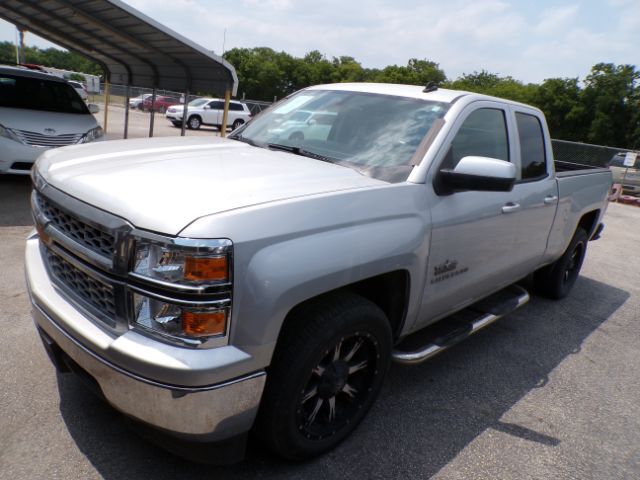Dump Truck Cubic Yard Capacity: Your Comprehensive Guide to Efficient Material Haulage
Dump Truck Cubic Yard Capacity: Your Comprehensive Guide to Efficient Material Haulage cars.truckstrend.com
In the world of construction, landscaping, mining, and waste management, the dump truck is an indispensable workhorse. Its primary function? To efficiently transport vast quantities of loose materials. At the heart of this efficiency lies a critical specification: Dump Truck Cubic Yard Capacity. Understanding this metric is not merely about knowing how much a truck can hold, but about optimizing project timelines, managing costs, ensuring safety, and complying with regulations.
This comprehensive guide will delve deep into the intricacies of dump truck cubic yard capacity, exploring its definition, the factors that influence it, different truck types, practical applications, and crucial considerations for anyone involved in material transport.
Dump Truck Cubic Yard Capacity: Your Comprehensive Guide to Efficient Material Haulage
Understanding Cubic Yard Capacity: More Than Just a Number
A cubic yard is a standard unit of volume, representing a cube that measures three feet by three feet by three feet (3’x3’x3′). When applied to a dump truck, its cubic yard capacity refers to the volumetric space available within the truck’s bed or trailer for carrying materials.
However, it’s not always as straightforward as measuring the internal dimensions. There are two primary ways cubic yard capacity is often expressed:
- Struck Capacity: This refers to the volume of material a truck can carry if the material is leveled off even with the top edges of the truck bed. It’s the "filled to the brim, no piling" measurement. This is typically used for liquid-like materials or when precise, level loads are required.
- Heaped Capacity: This accounts for the ability to pile material above the top edges of the truck bed, up to a certain angle of repose (the maximum slope at which a granular material remains stable without sliding). Heaped capacity is almost always greater than struck capacity and is more commonly used for loose, bulk materials like gravel, sand, or dirt, where a slight "heap" is permissible and common practice.
The distinction between struck and heaped capacity is vital, as it directly impacts how much material you can realistically transport per trip. Misinterpreting this can lead to under-ordering trucks, project delays, or, more dangerously, overloading.

Factors Influencing Dump Truck Capacity and Payload
While cubic yard capacity defines the volume a truck can hold, it’s crucial to remember that weight is often the ultimate limiting factor. A truck might have a large volumetric capacity, but if the material is extremely dense, it will hit its legal weight limit long before it reaches its heaped cubic yard capacity.
Several key factors interact to determine a dump truck’s effective capacity and payload:

Truck Size and Configuration:
- Single Axle: Smallest, typically used for lighter, smaller jobs.
- Tandem Axle: The most common "standard" dump truck, with two rear axles.
- Tri-Axle/Quad-Axle: Equipped with three or four rear axles for increased weight distribution and payload capacity, often featuring liftable "tag" axles.
- Articulated Dump Trucks (ADTs): Designed for off-road, rugged terrain, with a hinged chassis allowing for excellent maneuverability and large capacities.
- Rigid Frame Dump Trucks: Massive, purpose-built trucks for mining and quarry operations, designed for extreme loads on private hauls.

-
Material Density: This is perhaps the most critical factor alongside the truck’s physical capacity.
- Light Materials: Mulch (400-800 lbs/cu yd), topsoil (1,800-2,200 lbs/cu yd), wood chips. These will likely fill the truck to its heaped volumetric capacity without exceeding weight limits.
- Medium Materials: Sand (2,700-3,000 lbs/cu yd), gravel (2,800-3,200 lbs/cu yd), asphalt (2,200-2,400 lbs/cu yd). These materials can push a truck’s weight limits even if the bed isn’t entirely "heaped."
- Heavy Materials: Concrete (4,000-4,900 lbs/cu yd), crushed stone (2,400-2,700 lbs/cu yd, but can vary greatly with type and moisture). These materials will almost always hit the truck’s weight limit before its volumetric capacity.
-
Legal Weight Limits (GVWR & GAWR): State and local regulations impose strict limits on the Gross Vehicle Weight Rating (GVWR – total weight of truck, fuel, driver, and load) and Gross Axle Weight Rating (GAWR – weight on individual axles). These laws are in place to protect roads and bridges and ensure public safety. Overloading can result in hefty fines, vehicle impoundment, and even criminal charges.
-
Truck Specifications: Beyond axles, the truck’s engine power, transmission, suspension system, and tire ratings all play a role in its ability to safely and efficiently transport a given load, impacting its effective capacity.
-
Application and Terrain: Off-road operations, steep grades, or rough terrain can necessitate reduced loads to maintain stability, prevent damage, and ensure safety.
Types of Dump Trucks and Their Typical Cubic Yard Capacities
Dump trucks come in a wide range of sizes and configurations, each suited for different tasks and material volumes. Here’s a general overview of their typical cubic yard capacities:
- Standard Single Axle Dump Truck: Primarily for light-duty work, often landscaping or small construction projects.
- Typical Capacity: 5-7 cubic yards.
- Standard Tandem Axle Dump Truck ("Ten-Wheeler"): The most common sight on construction sites, versatile for various materials.
- Typical Capacity: 10-16 cubic yards (heaped).
- Tri-Axle / Quad-Axle Dump Truck: Designed for heavier payloads, common in aggregate and large-scale construction.
- Typical Capacity: 18-24 cubic yards (heaped).
- Transfer Dump Truck: A standard dump truck pulling a separate dump trailer, significantly increasing total capacity.
- Typical Capacity: 25-35 cubic yards (combined).
- Superdumps: A tandem or tri-axle truck with a load-bearing "tag" axle that extends the wheelbase, allowing for greater legal weight capacity without a separate trailer.
- Typical Capacity: 20-30 cubic yards (heaped).
- Articulated Dump Trucks (ADTs): Excellent for off-road conditions, often found in quarries, mines, and large civil engineering projects. While primarily rated by payload in tons, their volumetric capacity is substantial.
- Typical Capacity: 25-40+ cubic yards.
- Rigid Frame Dump Trucks: Gigantic trucks used exclusively in mining and large-scale earthmoving on private property. Also rated by tons.
- Typical Capacity: 40-500+ cubic yards (for the largest models).
Calculating and Optimizing Dump Truck Usage
Effective project planning hinges on accurately assessing your dump truck needs.
- Calculate Total Material Volume: Determine the total cubic yards of material to be moved.
- Estimate Material Density: Know the approximate weight per cubic yard of your specific material. This is crucial for understanding how much weight each cubic yard will contribute.
- Determine Truck’s Practical Capacity: Based on the truck type, its stated cubic yard capacity (heaped), and the material density, calculate the maximum safe and legal volume it can carry per trip. Often, this means if the material is heavy, you’ll be limited by weight before you fill the bed to its heaped capacity.
- Example: A truck with a 15-yard heaped capacity carrying sand (approx. 2,900 lbs/cu yd). 15 yards * 2,900 lbs/yd = 43,500 lbs. If the truck’s legal payload limit is 40,000 lbs, you can only carry approximately 40,000 lbs / 2,900 lbs/yd = ~13.8 cubic yards, even though the truck bed can physically hold 15.
- Calculate Number of Loads: Total material volume / practical capacity per load = total number of loads.
- Factor in Cycle Time: Consider loading time, travel time (to and from the dump site), unloading time, and potential delays. This helps determine how many loads a single truck can complete per day.
Optimizing Usage:
- Match Truck to Material: Don’t use a massive truck for light landscaping debris, nor a small truck for dense demolition rubble.
- Load Efficiently: Distribute the load evenly across the truck’s axles to comply with GAWRs and maintain stability. Avoid "piling" excessively, especially with heavy materials, as this can lead to instability and spillage.
- Minimize Idle Time: Ensure loaders are ready, routes are clear, and dump sites are accessible to keep trucks moving.
- Route Planning: Choose routes that are safe, efficient, and comply with all weight restrictions. Avoid unnecessary steep grades or rough terrain that can strain the vehicle.
- Regular Maintenance: Well-maintained trucks are more reliable and efficient, reducing breakdowns and costly downtime.
Important Considerations and Challenges
- Overloading: This is the most significant challenge. Beyond fines and legal issues, overloading poses severe safety risks (reduced braking efficiency, instability, tire blowouts) and causes excessive wear and tear on the truck, leading to costly repairs and reduced lifespan.
- Underloading: While safer, underloading is inefficient. It means more trips, higher fuel consumption per unit of material, and increased labor costs, ultimately driving up project expenses.
- Regulatory Compliance: Always verify state, county, and local weight limits and permitting requirements. These can vary significantly.
- Material Specifics: Materials with high moisture content (e.g., wet sand, clay) will be heavier than dry materials. Also consider the "angle of repose" for loose materials; some pile higher naturally than others.
- Environmental Factors: Dust control, spill containment, and noise regulations can impact how and where dump trucks operate.
Practical Advice and Actionable Insights
- Always Communicate with Your Hauler: Clearly state the type of material, its estimated density, and the total volume you need to move. They can advise on the best truck for the job.
- Prioritize Weight Over Volume for Dense Materials: If you’re moving aggregates or concrete, assume weight limits will be your primary constraint, not just the physical space in the bed.
- Get Quotes: Prices vary widely based on location, fuel costs, truck availability, and project duration. Always get detailed quotes.
- Factor in Contingency: Unforeseen delays, breakdowns, or weather can impact your hauling schedule. Build in some buffer time.
- Safety First: Never compromise on safety to move more material faster. Adhere to all weight limits and operational guidelines.
- Consider a Mix of Trucks: For complex projects with diverse material types, a combination of different dump truck sizes might be the most efficient solution.
Estimated Dump Truck Rental Rates (Hourly/Daily/Per Load)
Please note: The prices below are highly variable estimates and depend heavily on geographical location, fuel prices, operator wages, truck availability, the specific material being hauled, the duration of the project, and the individual rental company. Always obtain a direct quote for your specific needs.
| Truck Type | Typical Cubic Yard Capacity (Heaped) | Estimated Hourly Rate (with operator) | Estimated Daily Rate (with operator) | Estimated Cost Per Load (Approximate) |
|---|---|---|---|---|
| Standard Single Axle | 5 – 7 cu yd | $75 – $120 | $600 – $900 | $100 – $150 |
| Standard Tandem Axle | 10 – 16 cu yd | $90 – $150 | $700 – $1200 | $120 – $200 |
| Tri-Axle / Quad-Axle | 18 – 24 cu yd | $100 – $170 | $800 – $1300 | $150 – $250 |
| Transfer Dump Truck | 25 – 35 cu yd (combined) | $120 – $200 | $900 – $1500 | $180 – $300 |
| Articulated Dump Truck (ADT) | 25 – 40+ cu yd (off-road) | $150 – $250 | $1200 – $2000 | Varies greatly by project |
| Rigid Frame Dump Truck | 40 – 500+ cu yd (mining/quarry) | $200 – $500+ | $1600 – $4000+ | Varies greatly by project |
Disclaimer: These are general ranges. Some companies may offer flat-rate per-load pricing, especially for consistent, high-volume jobs. Fuel surcharges, mobilization fees, and overtime rates can also apply. Always get a detailed quote.
Frequently Asked Questions (FAQ)
Q1: What’s the difference between "struck" and "heaped" capacity?
A1: "Struck" capacity is the volume of material if leveled even with the top of the truck bed. "Heaped" capacity includes material piled above the bed, up to its natural angle of repose, and is generally larger. Heaped capacity is more commonly used for loose, bulk materials.
Q2: How do I know if my material is too heavy for a truck’s cubic yard capacity?
A2: You need to know the material’s density (weight per cubic yard) and the truck’s legal payload limit (in pounds or tons). Multiply the truck’s cubic yard capacity by the material’s density. If this figure exceeds the truck’s legal payload, you will hit the weight limit before filling the truck to its heaped capacity. Always prioritize the legal weight limit.
Q3: Is it better to rent by the hour or by the load?
A3: It depends on the project. Hourly rates are often better for complex jobs with unpredictable loading/unloading times or if you need the truck to wait. Per-load rates are usually more efficient for high-volume, consistent hauling with quick turnaround times. Discuss with your hauler to determine the best pricing structure for your specific job.
Q4: What are the consequences of overloading a dump truck?
A4: Consequences include hefty fines, vehicle impoundment, increased risk of accidents (reduced braking, instability), excessive wear and tear on the truck’s components (tires, suspension, engine), and potential damage to roads and bridges.
Q5: Can I use a standard dump truck for mining operations?
A5: Standard on-road dump trucks (tandem, tri-axle) are generally not suitable for heavy mining or quarry operations. These environments require specialized, robust articulated or rigid-frame dump trucks designed for extreme loads, rough terrain, and continuous heavy-duty cycles.
Q6: How does moisture content affect material weight?
A6: Significantly. Wet materials, like saturated sand or clay, can weigh considerably more per cubic yard than their dry counterparts. This increased weight can quickly push a dump truck over its legal payload limit, even if the volume seems manageable. Always factor in moisture when estimating material weight.
Conclusion
Dump truck cubic yard capacity is a foundational concept for efficient and safe material transport. While it defines the volumetric space available, it must always be considered in conjunction with material density, legal weight limits, and the specific truck configuration. By understanding these interconnected factors, project managers, contractors, and operators can make informed decisions, optimize logistics, minimize costs, and most importantly, ensure the safety and regulatory compliance of their hauling operations. Informed planning and a thorough understanding of these capacities are the keys to successful and profitable material movement.




